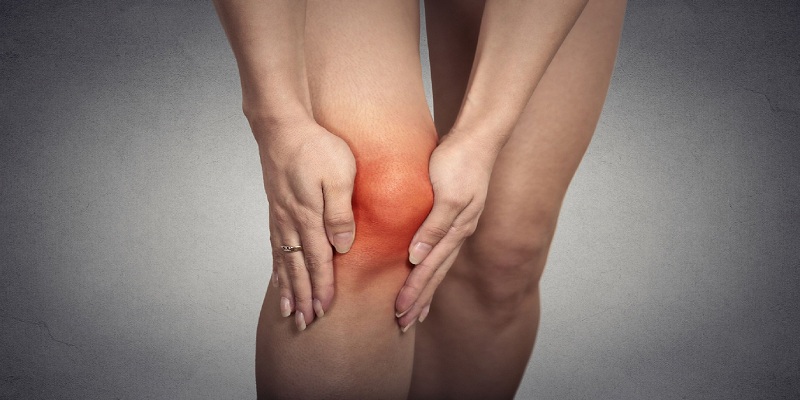
Sciatica Pain: Causes, Symptoms, and Effective Solutions
Sciatica pain is a common condition that affects the sciatic nerve, which is the longest nerve in the body. This nerve runs from the lower back through the hips, buttocks, and down each leg. When something irritates or compresses the sciatic nerve, it can cause pain, tingling, numbness, or weakness in the lower back, buttocks, and legs. In this article, we will explore the causes, symptoms, and treatment options for sciatica pain.
Causes of Sciatica Pain:- Sciatica pain usually occurs when a herniated disc, bone spur, or narrowing of the spine (spinal stenosis) compresses or irritates the sciatic nerve. Some common causes of sciatica pain are as follows
- Herniated Discs: When the soft center of a spinal disc pushes out through a crack in the tougher exterior, it can irritate the nearby nerves, including the sciatic nerve.
- Bone Spurs: With the aging process, the body may develop small growths of bone on the spine, which can compress the nerves, including the sciatic nerve.
- Spinal Stenosis: This condition refers to the narrowing of the spinal canal, which puts pressure on the nerves, including the sciatic nerve.
- Piriformis Syndrome: The piriformis muscle, located in the buttocks, can sometimes irritate or compress the sciatic nerve, leading to sciatica pain.
Symptoms of Sciatica Pain: Sciatica pain manifests differently in individuals, but common symptoms include:
- Lower back pain: Pain and discomfort that radiates from the lower back down to the legs is a typical sign of sciatica.
- Leg pain: Sharp, shooting pain that extends from the buttocks down to the legs, often affecting one leg more than the other.
- Numbness and tingling: People with sciatica may experience numbness, tingling, or a pins-and-needles sensation in the affected leg.
- Muscle weakness: Weakness or difficulty moving the affected leg or foot may indicate sciatica.
It’s important to remember that sciatica pain varies in severity and can range from mild discomfort to debilitating pain.
Treatment Options for Sciatica Pain: Several treatment options can help alleviate sciatica pain, including:
- Acupuncture: When it comes to sciatica pain, acupuncture is believed to function in several ways:
- Promoting blood flow: By inserting needles into specific points, acupuncture is thought to stimulate blood circulation, which can enhance the delivery of oxygen and nutrients to the affected area. This increased blood flow may help reduce inflammation and relieve sciatica pain.
- Releasing endorphins: Acupuncture can trigger the release of endorphins, which are natural pain-relieving substances produced by the body. These endorphins can help reduce pain signals and induce a sense of well-being.
- Reducing muscle tension: Sciatica pain can be exacerbated by muscle tension in the lower back, hips, and buttocks. Acupuncture may help relax these muscles, relieving pressure on the sciatic nerve and reducing pain.
- Modulating pain signals: Acupuncture is believed to influence the nervous system, including the way pain signals are transmitted. By stimulating certain acupuncture points, it may help disrupt the pain signals associated with sciatica.
- Cupping Therapy: Cupping therapy is believed to help alleviate sciatica pain through the following mechanisms:
- Improved blood flow:The suction created by the cups draws blood to the affected area, promoting circulation and delivering oxygen and nutrients to the muscles and nerves. This increased blood flow may help reduce inflammation and relieve pain.
- Muscle relaxation: Sciatica pain can be exacerbated by muscle tension in the lower back, hips, and buttocks. Cupping therapy helps to relax the muscles by stretching the underlying tissues and fascia, relieving pressure on the sciatic nerve and reducing pain.
- Release of trigger points: Trigger points are tight knots in the muscles that can cause referred pain, including sciatica. Cupping therapy can help release these trigger points by improving oxygenation and blood flow to the area, which may provide relief from sciatica pain.
- Stimulation of the nervous system: Cupping therapy can stimulate the sensory nerves in the skin, causing a therapeutic effect on the nervous system. This stimulation may help modulate pain signals, reducing the perception of pain associated with sciatica.
- Physical Therapy: Targeted exercises and stretches to improve strength and flexibility in the back, hips, and legs can help relieve pressure on the sciatic nerve.
- Hot or Cold Therapy: Applying heat or cold packs to the affected area can help reduce inflammation and alleviate pain.
- Surgery: In rare cases when other treatments fail, surgery may be necessary to address the underlying cause of sciatica, such as herniated discs or spinal stenosis.
Preventing Sciatica Pain: While it’s not always possible to prevent sciatica pain, there are some preventive measures you can take, including:
- Maintain good posture: Maintain proper posture while sitting and standing to reduce unnecessary strain on the spine.
- Exercise regularly: Engage in activities that promote strength, flexibility, and a healthy weight, which can reduce the risk of sciatica pain.
- Use proper lifting techniques: When lifting heavy objects, use your legs rather than your back to reduce the risk of injury.
- Take breaks during prolonged sitting: If your job requires sitting for extended periods, take regular breaks to stretch and move around to prevent undue pressure on the sciatic nerve.
Sciatica pain can significantly impact one’s quality of life, but with proper understanding, treatment, and preventive measures, it’s possible to manage and alleviate the discomfort associated with this condition. If you experience persistent or worsening sciatica pain, it’s essential to seek medical advice to determine the appropriate course of treatment.
Search
Categories
Recent Posts
-

-

Steps to a successful Business
August 01, 2019 -

Development Progress Conference
August 01, 2019
